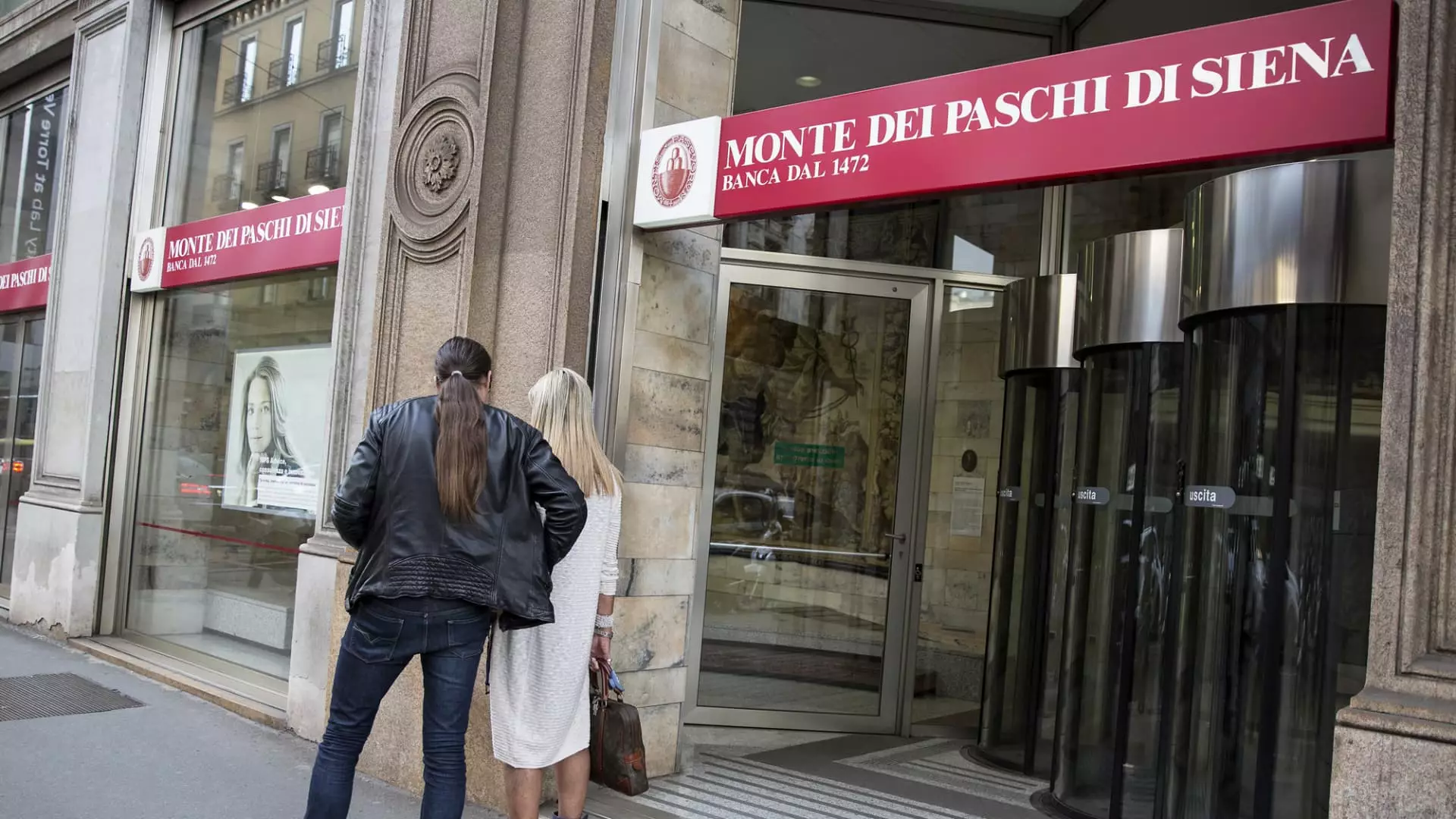In the heart of Italy’s banking landscape, Monte dei Paschi di Siena—the world’s oldest bank—has embarked on a remarkably audacious journey to acquire Mediobanca. This initiative, buoyed by a proposed 13 billion euro ($14.3 billion) all-share offer, represents a significant shift in the ethos and ambitions of a financial institution that has weathered its share of storms. What makes this scenario particularly compelling is not just the financial implications, but the broader context of an Italian banking sector poised for consolidation amid market uncertainties.
Mediobanca, with its esteemed reputation in wealth management and investment banking, stands as a formidable player that recently dismissed Monte dei Paschi’s advances as “destructive” and lacking financial rationale. However, the defiance from Mediobanca hasn’t deterred Monte dei Paschi; rather, it has sharpened its resolve. The bank’s CEO, Luigi Lovaglio, has stated emphatically that they are “back” in control, enhancing the narrative of resilience against a background of obstacles, including a government bailout in 2017 that saw the Italian state once hold a majority stake.
Market Turbulence vs. Growth Ambitions
The imminent threat of market volatility has led certain institutions to reconsider strategic decisions, as observed with UK private equity firms like 3i Group delaying sales and Klarna stalling its IPO. However, Lovaglio is steadfast in his belief that the current environment, while turbulent, should not hamper their aspiration. Rather, he argues, it underscores the need for size and diversity in revenue streams. This assertion points to a significant trend: as market conditions fluctuate, the demand for more resilient, diversified financial entities becomes paramount.
Lovaglio’s conviction that merging with Mediobanca would fortify their operational footprint amidst uncertainty raises critical questions about the convergence of strategy and pragmatism. Many analysts have taken a nuanced stance regarding the potential synergies that could emerge from this combination. For instance, Deutsche Bank acknowledges untapped opportunities for Monte dei Paschi, whereas Barclays takes a more skeptical view, suggesting the high costs involved in swaying Mediobanca’s shareholders could compromise the financial health of Monte dei Paschi.
This divergence of opinions emphasizes the inherent complexity in the banking sector, where the ambition to consolidate must be evaluated alongside fiscal prudence. Analysts have pointed out that two disparate banking entities may face challenges in harmonizing their operations and cultures—a reality that could inhibit expected synergies.
Investor Sentiment and Market Reaction
As the timeline for this prospective deal narrows, marked by Lovaglio’s anticipation of a July completion, investor sentiment has exhibited turbulence reflective of broader market trends. Following the announcement of Monte dei Paschi’s intentions, stocks in both banks witnessed a downward trajectory: Mediobanca’s share price plummeted approximately 14%, while Monte dei Paschi saw a decline of around 8.5%. Such volatility raises alarms among investors about the stability of the deal and the allure of the proposed amalgamation.
What remains to be seen is whether Lovaglio will be compelled to sweeten the deal to appease Mediobanca’s existing shareholders. As potential returns stay up for debate, this critical juncture could define the future of Monte dei Paschi, not just in terms of operational growth but also in establishing investor confidence and maintaining market stability.
A Protagonist in a Rapidly Evolving Banking Landscape
The confluence of market changes and strategic aspirations positions Monte dei Paschi di Siena at the epicenter of a significant transformation in the Italian banking sphere. Lovaglio’s framing of their bid as not just a step toward acquisition but a necessary evolution speaks to an urgent need for established banks to adapt or risk obsolescence in an increasingly competitive field. The notion that this initial wave of consolidation may lead to further mergers within the next two years hints at a broader trend that could reshape the Italian financial services landscape.
Ultimately, the success of this endeavor hinges on numerous factors: market conditions, shareholder sentiments, and operational compatibility. Time will reveal whether Monte dei Paschi can emerge as a powerful protagonist, navigating the tumultuous waters of the banking industry while championing bold aspirations for growth and sustainability.

